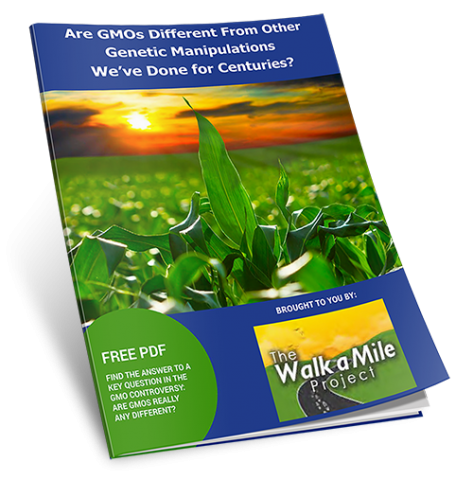7 Things You Need to Know About the FDA’s Approval of GMO Salmon
GMO Salmon Is Officially on Its Way
The FDA just approved genetically engineered AquAdvantage salmon, produced by the company AquaBounty. They engineered the salmon by adding a growth hormone from a Chinook salmon and a promoter gene from an ocean pout. Ocean pout is an eel-like fish that can grow year-round in freezing waters, and as an article by Tim Schwab from Food & Water Watch put it, “is only as closely related to Atlantic salmon, taxonomically speaking, as a human is related to a porcupine or a platypus.” As approved, the eggs will be fertilized at a facility in Canada, while the fish will be farmed at a facility in Panama. Here are 7 key things you should know…

GMO Salmon is on its way…
1. There are serious concerns over the environmental impact studies done for regulatory approval. Not just from one person or organization, but many, including organizations like Food and Water Watch and the Dept of Fisheries and Oceans Canada. One of the more disconcerting opinions comes from Dr. Anne Kapuscinski, professor of Environmental Studies at Dartmouth College. Her background in salmon conservation (she specializes in environmental risk assessment in aquaculture systems) gives her opinion a little extra weight, and a few years back she told OutsideOnline that she has —
…serious concerns with the scientific rigor of the environmental risk assessment generated by AquaBounty.
She went on to say —
“There were a lot of things in the way they presented their approach to risk assessment and a lot of what we saw in the Environmental Assessment that was released to the public [that] suggested that they are not on the cutting edge of the state of the art of risk assessment science. They need to be on that cutting edge when we’re dealing with a precedent-setting case, and one that is challenging because we’re dealing with an animal that’s barely domesticated.”
Anne then voiced the same concern you’ll see echoed in several circles — what if the salmon does indeed escape into the wild:
“Any salmon that escapes from human control, if it’s in habitat that it can survive in, is going to continue to live. And we know that farmed salmon is a global commodity… the company is not going to make a profit by simply growing small numbers of salmon in Panama. That’s just a proof of concept facility. This company is going to make money by selling millions upon millions of eggs to big salmon farms all over the place.”
Take a look at Canada’s official take on the same data, and you’ll find no comfort there either, as Dept. of Fisheries and Oceans Canada had this to say about the potential environmental impact —
“The findings of the hazard assessment… suggest that impacts to the environment resulting from exposure to AAS may range from low to high (with the exception of biodiversity which is unknown), depending on which component of the ecosystem is under consideration.” “Uncertainty associated with the hazard assessment is high and reflects the limited availability of data…”
Those comments come straight from a 300+ page document titled Environmental Hazard Assessment provided by the Office of Aquatic Biotechnology – Dept. of Fisheries and Oceans Canada. As tends to be the norm with the GMO Controversy, we’re given an answer on one side (in this case, the FDA answers YES to GMO Salmon approval), and we immediately find more important questions that need to be answered.
Here’s the OutsideOnline article featuring professor Anne Kapuscinski: http://www.outsideonline.com/1900276/genetically-engineered-salmon-could-soon-run-wild [nextpagelink][/nextpagelink]




